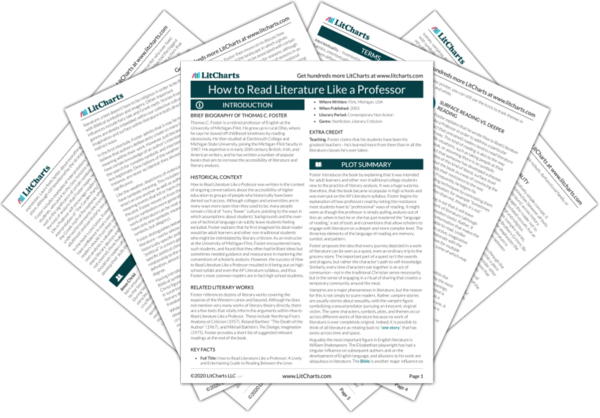Modernist literature can be particularly intimidating and impenetrable, and part of the problem is that every modernist text exists in something of a world of its own. As a result, “The only thing that can really prepare you to read
Ulysses is to read
Ulysses.” This point, however, can be interpreted in an encouraging light; books teach us how to interpret them as we read them, and no one approaches a book like
Ulysses with the right tools in advance. Furthermore, Foster insists that “you know more than you think you do.” Even readers who have not necessarily read much literature will have a bank of movies, TV shows, news items, and songs to draw upon, all of which are relevant and useful for deciphering works of literature.
